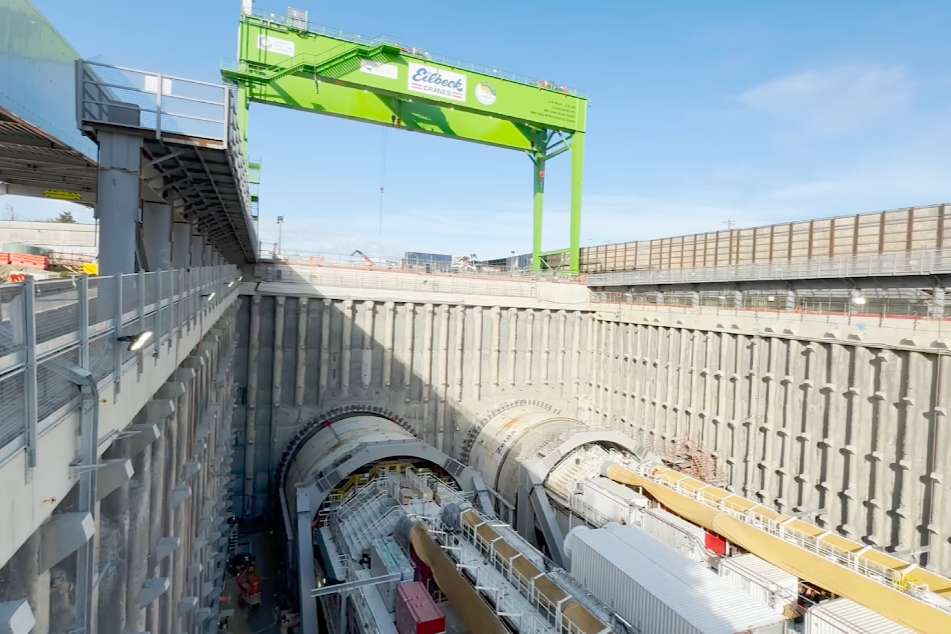
Melbourne’s long-planned orbital road network is edging closer to completion as the North East Link progresses through its most visible phase — the excavation of Victoria’s longest road tunnels. The $26.1 billion program represents the state’s largest road investment to date, aimed at closing the long-identified gap between the M80 Ring Road at Greensborough and the Eastern Freeway at Bulleen.
First proposed more than fifty years ago, the project’s purpose has remained consistent: relieve congestion on suburban roads, remove heavy vehicles from local communities, and improve freight efficiency along key logistics corridors. Today, North East Link is being delivered within the Victorian Government’s Big Build framework under the direction of the North East Link Program (NELP). The Primary Package — covering tunnel design, construction and long-term asset performance — is being delivered by the Spark consortium through an availability-based Public-Private Partnership (PPP).
For senior infrastructure stakeholders watching Australia’s next generation of major transportation assets unfold, North East Link represents a test of large-scale procurement, tunnelling execution in urban conditions, and the balancing of transport outcomes against long-term public value.
Tunnelling Progress: Halfway Through Australia’s Most Complex Urban Road Drive
The program’s central engineering task is the excavation of 6.5-kilometre twin three-lane tunnels between Watsonia and Bulleen. Two 15.6-metre diameter tunnel boring machines (TBMs) — Gillian and Zelda — commenced operations in mid-2024 and are now more than three kilometres into their drives.
The ground along the alignment comprises silts, clays, mudstone and basalt with varying degrees of ground stability. Early work included construction of a substantial launch box and supporting infrastructure to manage spoil extraction and segment supply. Since then, precast segment rings have been installed continuously as the TBMs advance, with automated logistics systems designed to sustain production and minimise surface disruption.
Following a scheduled maintenance stoppage near Lower Plenty Road, advance rates have stabilised, and breakthrough into Bulleen is targeted for Q2 2026. Completion of the tunnel structure will be followed by cross-passage excavation and mechanical and electrical fit-out, including ventilation, emergency egress, lighting, and intelligent transport systems. The tunnels are intended to accommodate the future requirements of connected and electric vehicles, integrating monitoring and management systems common to next-generation freeway tunnels globally.
A ground movement incident in early 2025 near Lower Plenty Road resulted in a temporary shutdown and a rapid safety review. Work resumed after adjustments to monitoring and support measures — a reminder of the geotechnical complexity involved and the role of governance mechanisms built into the PPP structure.
Surface Works and Freeway Integration
While tunnelling draws the most attention, surface works along the Eastern Freeway and the M80 are progressing in parallel. Upgrades will increase capacity, separate express and local traffic movements, and incorporate noise-reduction and environmental treatments suited to adjacent neighbourhoods.
These surface improvements are essential: North East Link cannot operate at full value without seamless interchange connections and an unbroken flow path for freight. Staging is designed to limit network disturbance, though temporary constraints are being managed as crews reposition traffic lanes and advance major bridge and ramp structures.
Once operational, Melbourne will gain the state’s first dedicated busway along the Eastern Freeway, supporting modal shift and resilience across corridors already under capacity strain.
PPP Delivery, Risk Transfer, and Governance
For decision-makers, the most instructive aspect of North East Link may be its commercial structure. The $11.1 billion Primary Package, awarded in 2021, shifts substantial design, construction, and lifecycle performance responsibilities to Spark. Under the availability-based PPP, payments are linked to operational readiness and asset performance, extending 25 years beyond construction.
The contract uses an Incentivised Target Cost model — a mechanism designed to align risk, cost and delivery incentives between the state and private sector. This approach reflects global best practice for major tunnelling programs, where uncertainties in geotechnical conditions and urban interfaces must be shared transparently and proactively managed.
Cost escalation from briefing-stage estimates to present budget settings primarily reflects materials and logistics inflation, expanded tunnelling, and property acquisition costs. State auditors continue to track performance against budget and schedule metrics closely, with transparency now largely standard for PPPs of this size.
Environmental and Community Compliance
The tunnels run under areas of environmental sensitivity, including the Banyule Flats wetlands and sections of the Yarra River corridor. In response, the program includes:
-
Noise and vibration controls
-
Real-time settlement monitoring
-
Structured spoil handling and reuse pathways
-
Green bridge infrastructure to restore wildlife movement
-
Significant vegetation replacement commitments
While the community impact has included construction noise, access constraints, and localized transport delays, formal engagement processes with councils and residents continue, supported by a North East Community Fund to manage social disruption.
Environmental oversight remains active throughout tunnelling and will continue as fit-out and commissioning begin.
Economic and Network Benefits
When operational, the North East Link is forecast to remove up to 15,000 trucks per day from suburban roads while offering up to 35 minutes in travel time benefits across key freight and commuter routes. The project is positioned to strengthen the city’s industrial and logistics performance by enabling efficient orbital movement between Melbourne’s major economic precincts — including Campbellfield, Dandenong, and the port-connected freeway networks.
Beyond ongoing construction employment — projected to peak above 10,000 jobs — the economic rationale for the program includes reduced supply chain delays and productivity gains from improved network reliability. Victoria’s population growth, forecast to exceed six million residents by 2030, is accelerating the need to complete this key infrastructure link now rather than defer it to a period of even higher cost.
Tolling, Operations and Long-Term Performance
Deployment of a tunnel-only tolling system maintains equity across the broader freeway network and encourages use of the tunnel alignment for long-haul freight and cross-city trips. The State Tolling Corporation oversees development of roadside and back-office tolling systems, ensuring revenue collection and operational compliance align with service obligations set in the PPP contract.
Integrated testing — combining tunnel systems, emergency response planning, and surface road operations — will be a major focus through 2027, with opening of the full corridor targeted in 2028, subject to program performance and readiness review outcomes.
A Reference Project for Australia’s Tunnelling Future
Major new mining, energy, and freight corridors across Australia suggest more complex tunnelling programs will be required nationwide in the coming decade. North East Link therefore serves not only as a transport investment, but as a reference project for:
-
PPP management under inflationary pressure
-
Community interface during deep urban tunnelling
-
Delivery of future-proofed asset systems
-
Integration of freight and public transport priorities
The program’s performance under these parameters will influence procurement models and stakeholder confidence for years to come.
Conclusion
North East Link is a defining infrastructure project for Victoria and a case study in the management of deep urban tunnelling through a PPP model. Its progress to date demonstrates strong tunnelling execution, increasing surface activity, and maturing governance that will be critical to maintaining value as the program continues.
As Melbourne prepares for another decade of growth, the completion of the city’s orbital road network stands as both a structural and economic milestone — enabling more reliable freight corridors, supporting east–west mobility, and strengthening metropolitan resilience.
With sustained delivery discipline and a focus on operational outcomes, North East Link is positioned to become a central asset in Victoria’s long-term economic and transport strategy — the long-missing link now approaching daylight.












